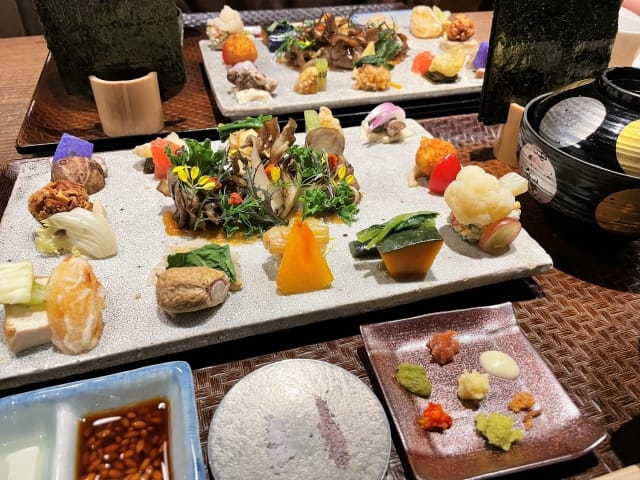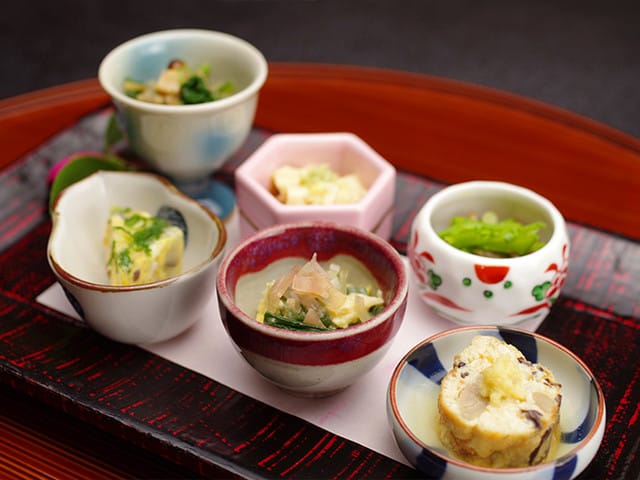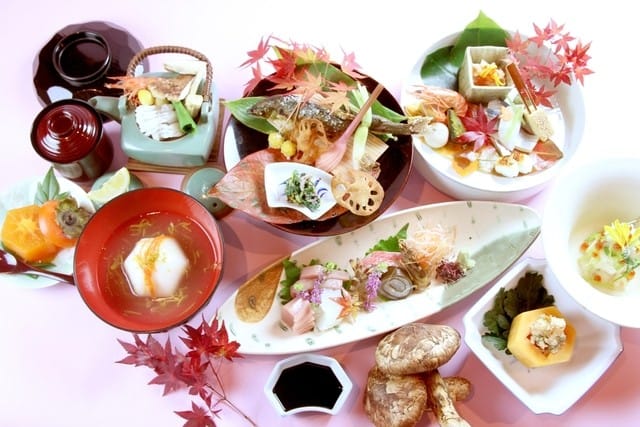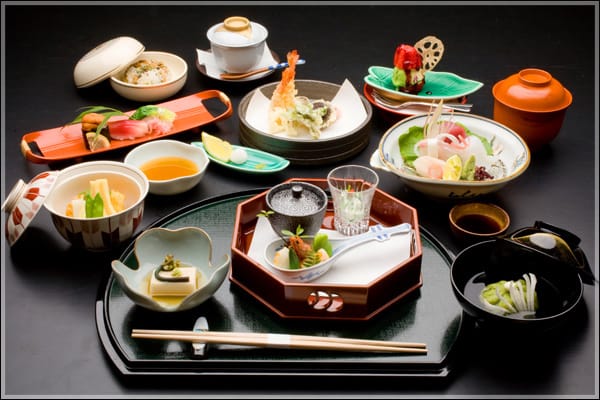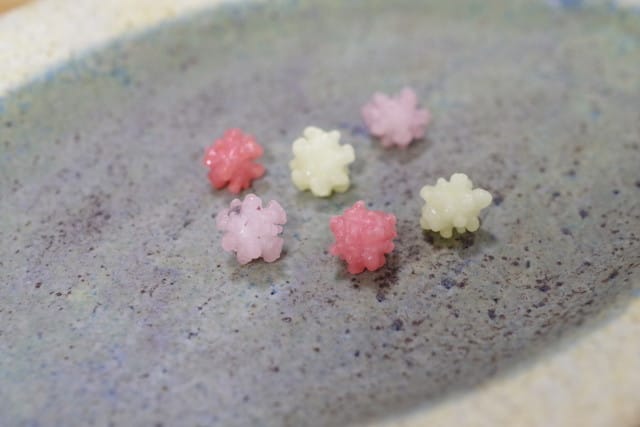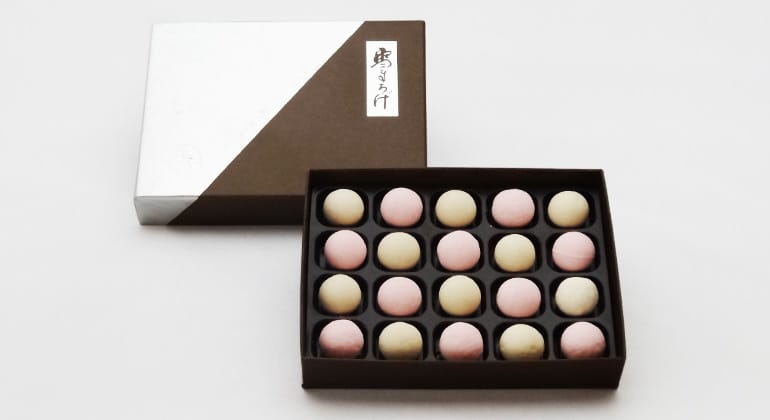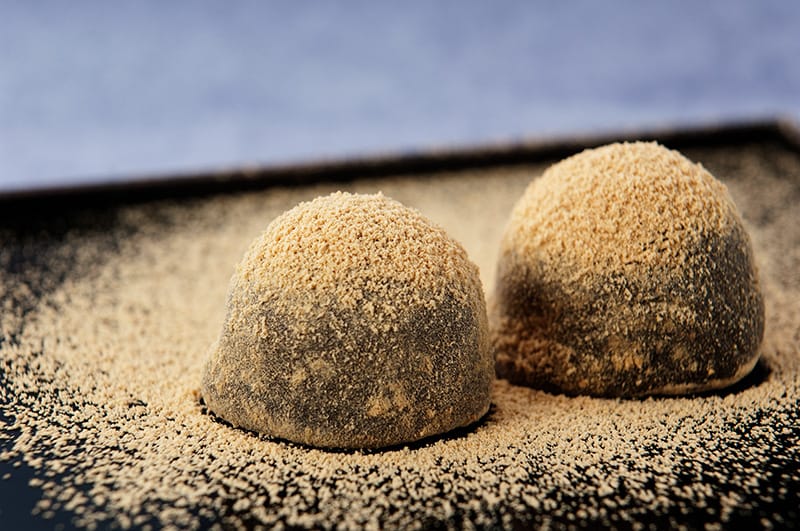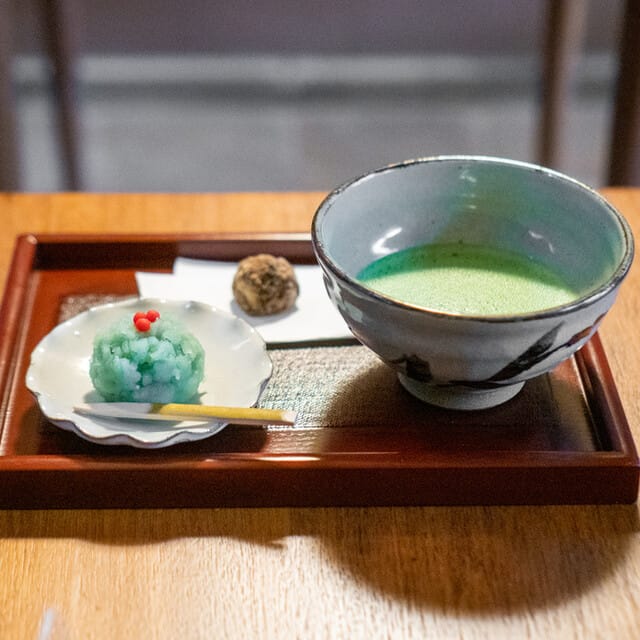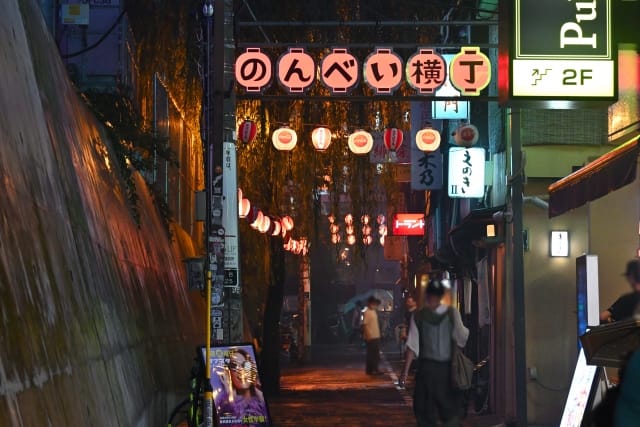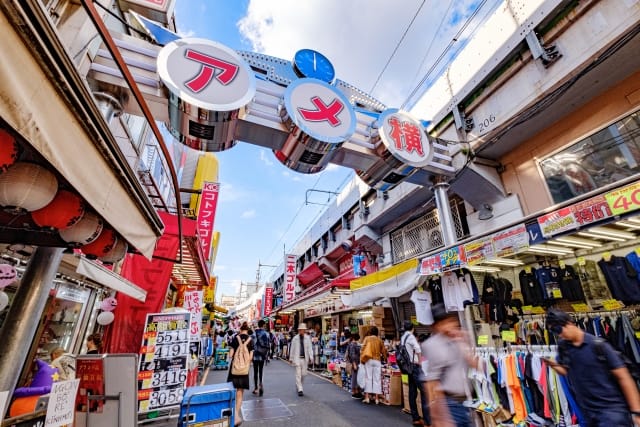Kyoto Traditional Foods & Sweets
Kyoto, a popular tourist destination in Japan, is a city known for its many shrines and temples, with famous attractions like Kinkaku-ji (Golden Pavilion) and maiko (apprentice geishas). Kyoto is also renowned as a city of fine cuisine, boasting one of the highest concentrations of restaurants in Japan.
In Kyoto, where cultural practices like tea ceremony and flower arrangement flourish, seasonal cuisine that celebrates nature is common. The cuisine is characterized not only by delicate flavors that bring out the best in ingredients but also by presentations so beautiful that diners hesitate to disturb them. Kyoto's cuisine, which can only be experienced in the city, exudes an elegant atmosphere and subtle refinement that attracts both domestic and international visitors.
In this article, we'll introduce recommended restaurants that serve historic Kyoto cuisine and Kyoto sweets. We've selected some of the most popular establishments from among Kyoto's array of renowned restaurants.


If you are interested in Kyoto's Food, check the article below! I summarized how and where you can enjoy Foods as much as possible.
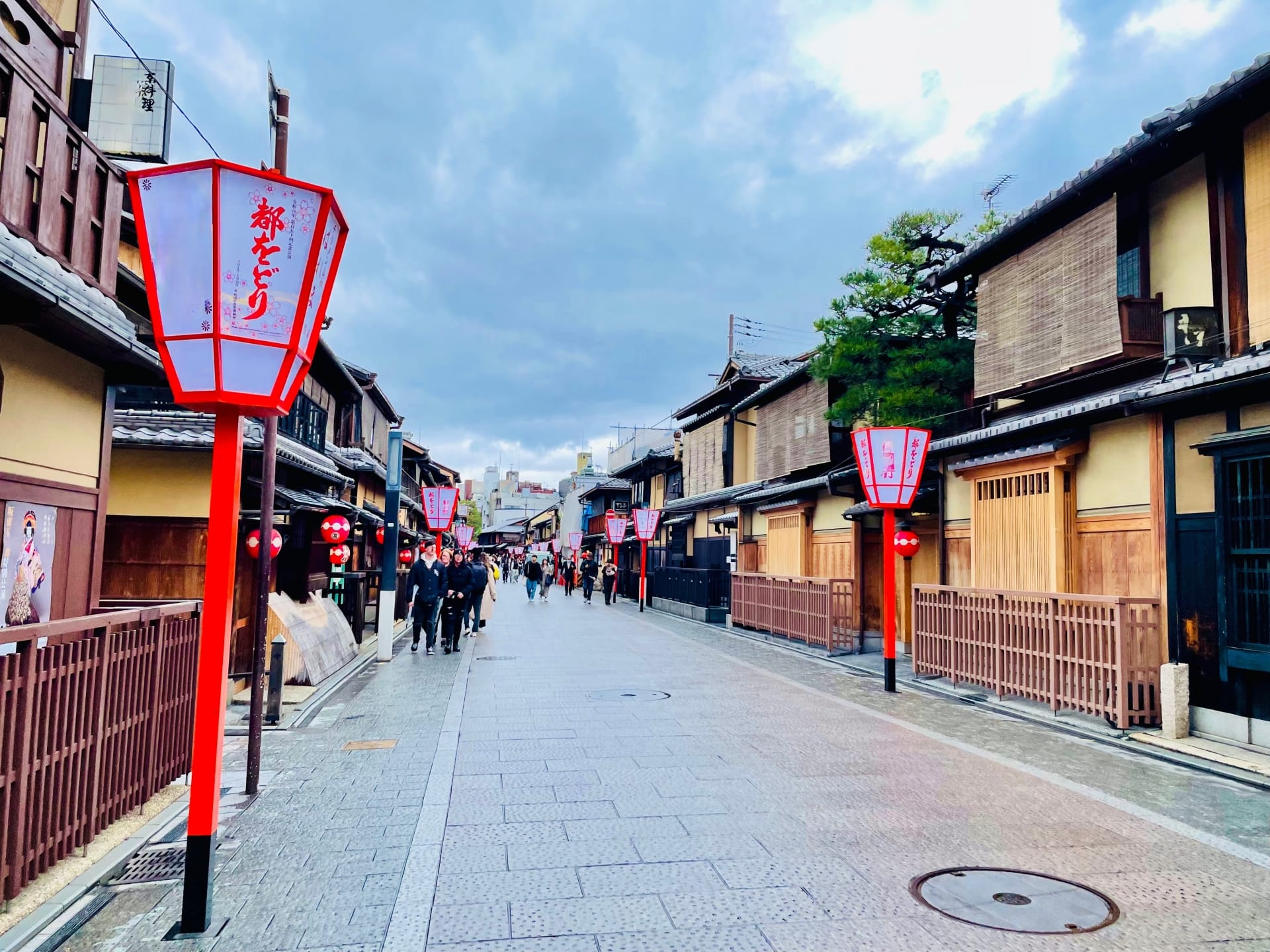
What are Kyoto's Traditional Foods?
Kyoto cuisine, or Kyoto Traditional Foods & Sweets, refers to Japanese cuisine that developed throughout Kyoto's long history. It is prepared using dashi (soup stock) and ingredients such as Kyoto vegetables.
A representative example of Kyoto cuisine is kaiseki, a multi-course Japanese meal. It features various dishes using seasonal ingredients, including appetizers, grilled items, and rice dishes.
Yudofu (hot tofu) is another traditional Kyoto dish. This simple dish involves warming tofu in kelp broth and eating it with condiments. It's said to have originated as shojin ryori (Buddhist vegetarian cuisine) eaten by monks.
Kinugasa-don, a rice bowl dish originating in Kyoto, consists of deep-fried tofu and Kujo green onions simmered and topped with egg over rice. You can find Kinugasa-don at soba restaurants and teishoku (set meal) restaurants in Kyoto.
Restaurants Serving Kyoto Cuisine
Kyoryori Hanasaki Nishiki Branch
source:Tabelog
This restaurant offers seasonal Kyoto cuisine. A key selling point is their use of fresh ingredients purchased daily from the market. They serve seasonal produce like Kyoto vegetables and fresh fish prepared using the most delicious cooking methods.
The recommended menu item is "Kashiwagi," which allows you to enjoy Kyoto cuisine easily. It includes various Japanese dishes from appetizers to sashimi (sliced raw fish) and sushi.
Seasonal limited menus are also recommended. From April to October, you can order hamo (pike conger eel) dishes, a summer specialty. I tried hamo dishes for the first time at this restaurant, and the fatty, satisfying eel was delicious.
Reservations are required, but private rooms are available for lunch orders over 6,000 yen and dinner orders over 10,000 yen. Why not enjoy a leisurely meal in a tasteful private room to commemorate your Kyoto trip?
<Store Information>
• Address: 549 Yaoya-cho, Nakagyo-ku, Kyoto City 604-8123
• Closed: Irregular
• Phone: 075-222-0710
• Hours: 11:30-14:00, 17:30-22:00 (Last order 20:00)
• Official website
Kyoryori Hachisei
source:Official website
This Japanese restaurant offers kaiseki cuisine featuring seasonal seafood and Kyoto vegetables. It's a hidden gem located in a back alley in Kyoto city. The appeal lies not only in the dishes that make the most of seasonal ingredients but also in the plating and seasonal tableware, allowing you to fully appreciate Kyoto Traditional Foods & Sweets.
The restaurant offers only three types of kaiseki course meals. The course contents vary depending on the availability of ingredients. You can enjoy Kyoto's elegant cuisine, including sashimi and sushi made with fresh seafood, and colorful, delicate desserts.
The recommended menu items are dishes using seasonal ingredients. The course contents change with the seasons. In summer, you can enjoy hamo shabu-shabu, while in winter, crab sukiyaki is available.
<Store Information>
• Address: 15-2 Chudoji Maeda-cho, Shimogyo-ku, Kyoto City 600-8804
• Closed: Irregular
• Phone: 075-285-3645
• Hours: 12:00-14:00, 18:00-22:00
• Official website
Kyoryori Oyone
source:Tabelog
This Japanese restaurant has been preserving Kyoto's flavors and techniques since 1927. Each dish is carefully handmade, taking ample time. Oyone's charm lies in their ability to customize dishes to each customer's preferences. If you communicate your dislikes in advance, they'll do their best to accommodate your tastes.
My recommended menu item is the Mini Kaiseki, which allows you to enjoy Kyoto cuisine at an affordable price. Despite being called "mini," it offers a full lineup of Kyoto Traditional Foods & Sweets, from appetizers to seasonal sashimi and grilled assortments.
If you have room after your course meal, I recommend trying a single dish featuring seasonal ingredients. When I visited in summer, I tried the Kamo nasu dengaku (grilled eggplant with miso). The seasoning enhanced the eggplant's natural flavor, making it easy to eat and hard to stop.
<Store Information>
• Address: 230 Shinmei-cho, Ayanokoji-dori Takakura Nishi-iru, Shimogyo-ku, Kyoto City 600-8092
• Closed: Sundays (Open for dinner with reservations for 5 or more people)
• Phone: 075-351-2849
• Hours: 12:00-14:30 (Last entry 13:00), 17:00-22:00 (Last entry 21:00)
• Official website
Kyoryori Manjiro
source:Tabelog
This Kyoto cuisine restaurant focuses on ingredients from Kyoto. Located in the Higashiyama area, the exterior retains a strong traditional Kyoto townhouse atmosphere. You can enjoy dishes made with famous Kyoto ingredients such as Kyoto vegetables, nama-fu (wheat gluten), and yuba (tofu skin).
While some establishments require introductions, Manjiro allows first-time visitors to call for maiko entertainment. Experience Kyoto-style hospitality in an extraordinary setting.
I recommend the Kinugasa kaiseki, a satisfying course of 9 kaiseki dishes. I particularly enjoyed the Kyoto beef steak and hamo-otoshi. The presentation and tableware are beautiful, making it a feast for both the eyes and the palate.
For those who want to taste Kyoto cuisine at a reasonable price, lunch is recommended. My lunch recommendation is the Mini Kaiseki Nene Gozen. The dishes change monthly, so what you'll get is a surprise until you visit the restaurant.
<Store Information>
• Address: 518 Washio-cho, Higashiyama-ku, Kyoto City 605-0074
• Closed: Irregular
• Phone: 075-551-2900
• Hours: 11:30-14:00, 17:30-22:00 (Last order 20:00)
• Official website
If you are interested in Kyoto's Best Restaurants, check the article below! I summarized how and where you can enjoy Kyoto's Best Restaurants as much as possible.
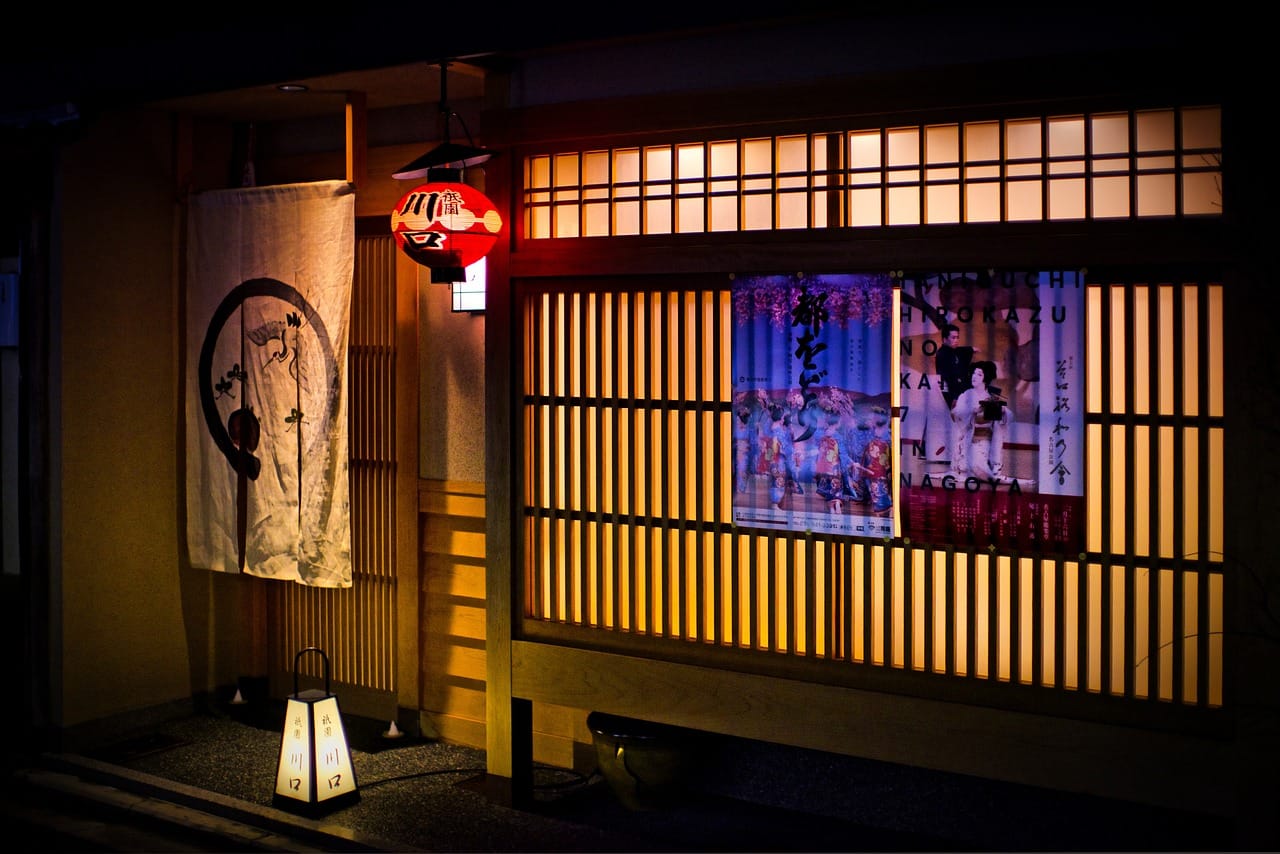
What are Kyoto's Traditional Sweets?
Kyoto sweets, or Kyogashi, are Japanese confections made in Kyoto. It's said that Kyoto's confectioners honed their skills to present sweets to the emperor, leading to unique developments. Kyoto Traditional Foods & Sweets often feature colorful and beautiful designs that evoke Japan's four seasons.
Part of the enjoyment of Kyogashi is appreciating their visual beauty and imagining what each piece represents.
Kyogashi are broadly categorized into three types: namagashi, hannamagashi, and higashi. Namagashi contains over 30% moisture content. Among namagashi, particularly high-quality ones are called jo-namagashi. Hannamagashi has 10-30% moisture content, while higashi has less than 10% moisture content.
Shops Where You Can Enjoy Kyoto Sweets
If you are interested in Kyoto Best Sweets & Snacks, check the article below! I summarized how and where you can enjoy Kyoto Best Sweets & Snacks as much as possible.
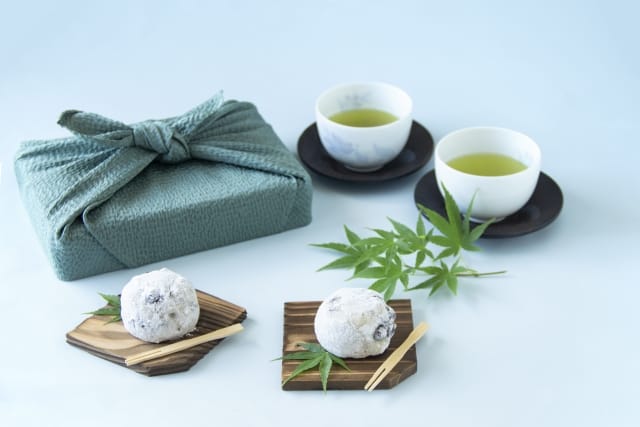
Ryokujuan Shimizu
source:Tabelog
This is a specialty shop selling a wide variety of Konpeito (sugar candy). Konpeito has its roots in Portuguese confeito. Japanese artisans studied the production method and created a uniquely Japanese translucent sugar candy.
Traditionally, Konpeito had only a sugar flavor regardless of its colorful appearance. Ryokujuan Shimizu, after much research, now manufactures and sells Konpeito in various flavors.
My recommended products are lemon and cinnamon Konpeito. The lemon Konpeito has a refreshing flavor that even those who don't like sweet things can enjoy. The cinnamon Konpeito has a flavor similar to cinnamon and spreads a cinnamon aroma when added to tea. Please give them a try.
While the flavors I recommended are delicious, why not try finding your favorite flavor when buying Konpeito?
<Store Information>
• Address: 38-2 Yoshida Izumiden-cho, Sakyo-ku, Kyoto City 606-8301
• Closed: Wednesdays (Open on holidays)
• Phone: 075-771-0755
• Hours: 10:00-17:00
• Official website
If you are interested in Ryokujuan Shimizu, check the article below! I summarized in more details and how I felt there.
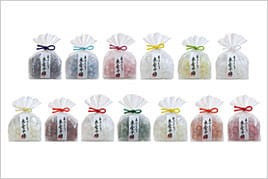
Shioyoshiken
source:Official website
This long-established Japanese confectionery shop is located in Kyoto's Nishijin area. Artisans who are well-versed in the properties of ingredients carefully craft each confection, bringing out their best qualities. The charm lies in the flavors that have been passed down through generations while adapting to contemporary tastes.
My recommended products are Yukimaroge and Chiyotansu. Yukimaroge is a cute round confection that melts in your mouth like snow. It comes in two varieties: red and white, and matcha. I recommend trying both for comparison.
Chiyotansu is a small chest (storage cabinet) made of washi (traditional Japanese paper) filled with dry confections. I bought it a few years ago because the container was so cute. After eating the sweets, I now use the chest to store small items.
<Store Information>
• Address: 180 Hidatonocho, Kuromon-dori Nakadachiuri-agaru, Kamigyo-ku, Kyoto City 602-8235
• Closed: Sundays, holidays, and one Wednesday per month (irregular)
• Phone: 075-441-0803
• Hours: 9:00-17:30
• Official website
Pontocho Surugaya
source:Official website
This is a long-established Japanese confectionery shop that has maintained its traditions for over 100 years. Their sweets, which bring out the best in natural ingredients, are the main attraction. It's conveniently located just a 5-minute walk from Sanjo Station.
If you're buying sweets at Surugaya, I recommend Hitokuchi Warabi and Yuzu no Ka. Hitokuchi Warabi is a confection with concentrated refined sweetness. I was worried I wouldn't be able to finish it all due to its short shelf life, but I couldn't stop eating and finished it in no time.
If you want to buy sweets with a longer shelf life, I recommend Yuzu no Ka. It's a Japanese-style madeleine that goes well not only with green tea but also with coffee and black tea. It uses slightly sweet white miso and yuzu, which has a refreshing aroma and acidity in Japanese cuisine, resulting in a rich flavor.
<Store Information>
• Address: Pontocho Sanjo-sagaru, Nakagyo-ku, Kyoto City 604-8017
• Closed: Tuesdays and Wednesdays
• Phone: 075-221-5210
• Hours: 10:00 - 17:00
• Official website
Mikuraya
source:Tabelog
This is a popular long-established Japanese confectionery shop that attracts many customers from far and wide. When you enter the store, you'll see samples of the day's sweets on display. You can dine in the store and order Japanese sweets and matcha.
I had warabi mochi and matcha in the eat-in area. The Warabi mochi had an elegant sweetness, and the matcha was easy to drink without bitterness. My recommended sweet is a confection called Tabiyakko.
Tabiyakko is a baked confection generously coated with Okinawan brown sugar, with a simple taste that doesn't get tiresome. Once I started eating, I couldn't stop and finished it in no time.
As it's a popular shop, items often sell out. Reservations are possible, so it's a good idea to reserve in advance if you know what you want to buy.
<Store Information>
• Address: 78 Shichiku Kitadaimon-cho, Kita-ku, Kyoto City 603-8416
• Closed: 1st and 15th of every month (January 1-3, August 16)
• Phone: 075-492-5948
• Hours: 09:00 - 18:00
• Official website
Conclusion
While Kyoto is famous for its shrine and temple sightseeing, it's also recommended to indulge in Kyoto's unique cuisine. Kyoto has many traditional foods, including Kyoto cuisine and Kyoto sweets. The restaurants introduced here are just a small selection, so please try visiting various establishments.
To fully enjoy Kyoto, participating in a food tour is recommended. The "Nishiki Market Brunch Walking Food Tour" allows you to enjoy brunch at Nishiki Market, known as Kyoto's kitchen. A local tour guide will introduce you to must-try local favorites from among the many shops.
